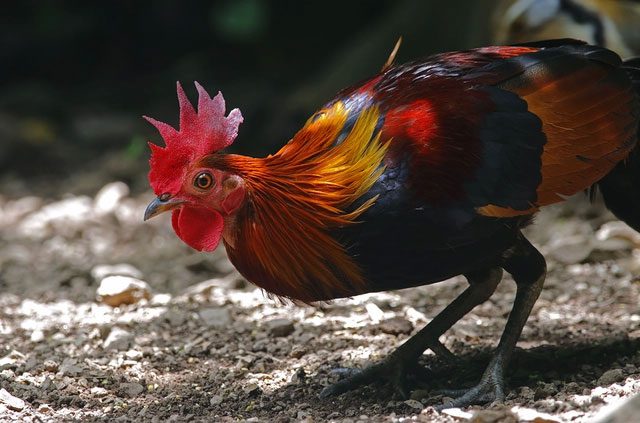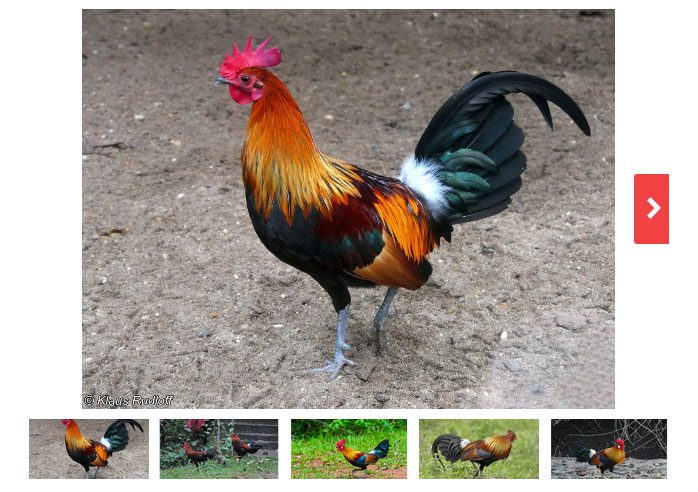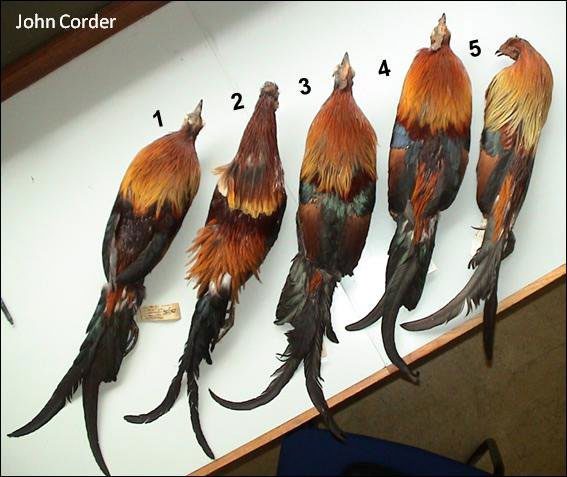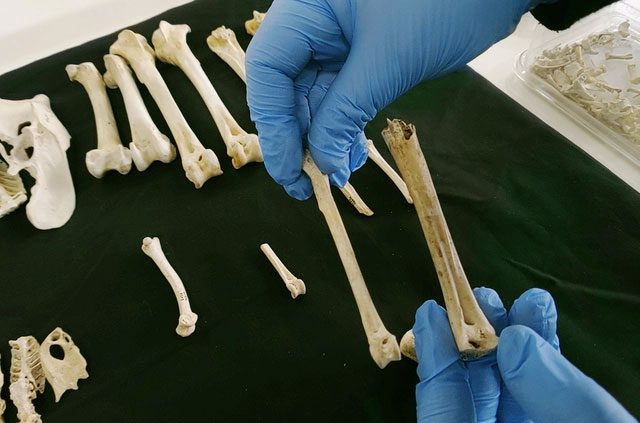For a long time, rice and chicken have been a widely favored “combo,” but new data from the field of archaeology shows that the relationship between chickens and rice grains is older than we thought. A recent study suggests that without rice paddies blooming, modern chickens would not exist.
The scientific report indicates that chickens may have been domesticated much later than previously assumed, only beginning when humans started cultivating rice in forested areas near where wild chickens lived.
According to archaeologist Dale Serjeantson from the University of Southampton, who did not contribute to the new research, rice fields in Southeast Asia played a significant role in the domestication of wild chickens. She asserts that the new study has “busted many myths related to the origins of modern chickens.”

Thai Red Junglefowl.
Charles Darwin believed that modern chickens are descendants of the red junglefowl, one of four species in the junglefowl genus, with the scientific name Gallus gallus. Looking at their appearance, we can see that Darwin’s assertion has merit.
However, it is not easy to prove Darwin’s claim, as the junglefowl species are diverse, stretching from India to northern China. Furthermore, fossilized chicken bones are rarely found at archaeological sites.
In 2020, a genetic analysis of 863 individual chickens confirmed that the subspecies Gallus gallus spadiceus, also known as Myanmar Junglefowl, is the ancestor of modern chickens; today’s chickens share more DNA with Gallus gallus spadiceus than any other subspecies. Based on the research results, scientists confirmed that the domestication process took place in Southeast Asia.
In the image below, from left to right, are the subspecies of red junglefowl: Gallus gallus jabouillei – Vietnamese Junglefowl, Gallus gallus bankiva – Javan Junglefowl, Gallus gallus gallus – Indochinese Junglefowl, Gallus gallus spadiceus – Myanmar Junglefowl, Gallus gallus murghi – Indian Junglefowl, and domestic chicken – Gallus gallus domesticus.


Gallus gallus jabouillei – Vietnamese Junglefowl, Gallus gallus bankiva – Javan Junglefowl, Gallus gallus gallus – Indochinese Junglefowl, Gallus gallus spadiceus – Myanmar Junglefowl, Gallus gallus murghi – Indian Junglefowl.
In the past, many organizations and experts have attempted to determine the timeline of chicken domestication but have been unsuccessful. They could not gather enough DNA from fossilized chicken bones to pinpoint the mysterious timeframe. To tackle this challenging issue, paleontologist Joris Peters and biologist Greger Larson, who is also an expert in animal domestication, sought answers from a vast collection of bones.
Dedicated to researching over 600 archaeological sites worldwide, reassessing the dating of all found chicken bones, the two experts and their team were determined to find answers. They even published a separate study indicating the dating of chicken bones from Western Eurasia and North Africa.
The research team discovered that the oldest chicken bones came from an excavation site in Ban Non Wat, Thailand. Here, farmers cultivated rice approximately 3,250 to 3,650 years ago and took the effort to bury chicken bones of the genus Gallus alongside many other domesticated animals – this evidence shows that these chickens were domesticated rather than wild.
The researchers theorize that the vast rice fields attracted wild chickens from the forests. They nested right at the edge of the rice fields and gradually became accustomed to humans.
Tracing chicken bones throughout Asia to the Middle East and Africa, the research team found surprising correlations between grain cultivation and the presence of chickens. About 3,000 years ago, chickens began to appear in China and India, reaching the Middle East and North Africa around 2,800 years ago. The study simultaneously confirmed that previous scientific reports were mistaken, as they had analyzed fossils that were not chickens or had errors in dating.

Ancient chicken bones with familiar shapes.
To determine when chickens first arrived in Europe, scientists directly re-dated the bones of 23 of the oldest chicken fossils. In a report just published in Antiquity, the team confirmed that the oldest chicken bones in Europe were found in an archaeological site of the Etruscans in Italy, dating back 2,800 years.
Historical texts also somewhat support the scientists’ assertions, including references from the Bible. “Chickens do not appear in the Old Testament,” says Naomi Sykes, the lead author of the study. “They suddenly appear in the New Testament.”
It took another 1,000 years for chickens to reach England (traveling with the Romans), then to the Scandinavian Peninsula and to Iceland. According to archaeologist Julia Best, who participated in both chicken-related studies, this tropical bird had to adapt to the cold climate.
Overall, the research findings indicate that humans only began to utilize chickens as a primary food source later on. According to Sykes, chickens were once considered valuable items due to their beautiful feathers and vibrant colors, alongside their loud crowing at dawn. Looking at how they were depicted in paintings and how they were respectfully buried, we can also see the importance of chickens in culture. Moreover, ancient domesticated chickens did not provide much nutritional value, as their size was still quite limited.
The report also highlights a sad milestone for chickens: about 500 years after they spread everywhere, they lost their status in society and became a common food for humans.

Was the decision to live near rice fields a mistake for chickens?
According to paleozoologist Masaki Eda from Hokkaido University, the new study shows that “the dispersal of domesticated chickens is a very contemporary event, much closer than previous assumptions.” However, researcher Eda still believes that the chicken bone samples in Thailand should be re-evaluated to confirm they are indeed domesticated chickens, not red junglefowl buried alongside humans.
He also wants to explore more regions in Southeast Asia, hoping to trace the movement of domesticated chickens across the Indochinese Peninsula and throughout the Eurasian continent.
According to biologist Greger Larson, even if chickens were domesticated later than other animals, they remain the most successfully domesticated species on the planet. The chicken population currently outnumbers humans at a ratio of 10:1. Archaeologist Naomi Sykes also remarked: “This research is not just about chickens or rice. The way humans relate to chickens is a lens through which we can better understand how humans connect with the natural world.”





















































